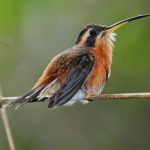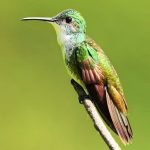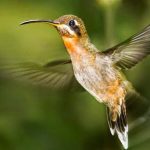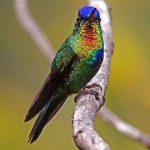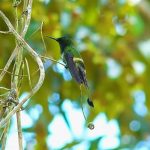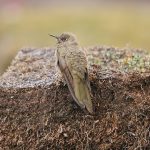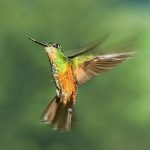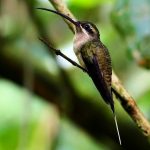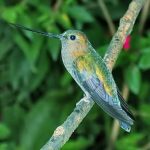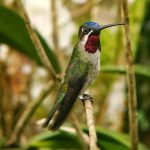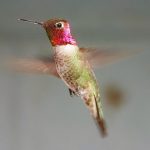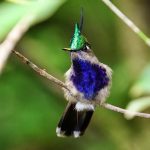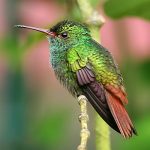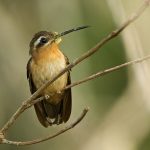Blue-throated hummingbird
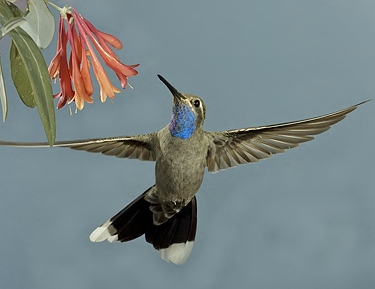
 |
| Photo by Joe McDonald (McDonald Wildlife Photography) |
Common name:
blue-throated hummingbird (en); beija-flor-de-garganta-azul (pt); colibri à gorge bleue (fr); colibrí gorgiazul (es); blaukehlnymphe (de)
Taxonomy:
Order Apodiformes
Family Trochilidae
Range:
This North American species is found in the southern United States, in southern Arizona, New Mexico and western Texas, and into Mexico as far south as Oaxaca.
Size:
These birds are 11-12,5 cm long and have a wingspan of 19 cm. They weigh 6-8,5 g.
Habitat:
The blue-throated hummingbird is generally found in open woodlands and secondary growth forests, preferring pine-oak and deciduous forests. They are also found in scrublands and tend to be near water. They are mostly found at high altitudes, breeding at 1.800-3.300 m, but come down to elevations as low as 300 m during the winter.
Diet:
They feed on the nectar of various plant, including Salvia, Penstemon, Lobelia laxiflora and Nicotiana, but will also take small insects and spiders found in or around flowers.
Breeding:
Blue-throated hummingbirds breed in February-September. The female builds the nest, a cup made of soft plant fibres, mosses and lichens, held together and attached to its support using spider webs. The nest may be attached to a tree branch, flowering plant, fern, vine, rock shelf, or to man-made object such as a wire or nail. There she lays 2 white eggs which she incubates alone for 17-19 days. The chicks are fed by the female alone and fledge 24-29 days after hatching. Each female may raise 1-3 broods per year, often with different males.
Conservation:
IUCN status – LC (Least concern)
This species has a large breeding range and a global population estimated at 2 million individuals. Habitat loss may pose a threat in some areas, mainly due to logging, but overall the population has an increasing trend.


